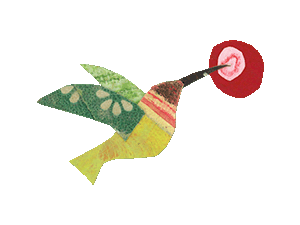Research Shows That Telling Family Stories Benefits Children
Photo by Laura Fuhrman on Unsplash
Halloween, Day of the Dead, and other celebrations occur in autumn as the leaves fall from trees, our gardens are harvested, and the green of summer turns golden and brown.
Today these celebrations often have a spooky element, but they were originally intended as ways to remember and honor those who died - our parents, grandparents, aunts, uncles, and friends.
By telling stories about loves ones who have passed, we help a child connect to their ancestors. This is not just sentimental.
Research shows that telling family stories has real benefits for children:
A stronger sense of identity
Higher self-esteem & lower rates of depression
The ability to tell richer and more complete stories on their own
A better understanding of other people’s thoughts and emotions
Better coping skills for life
It’s Very Simple
Start by recalling one or more loved ones in your life that have died. How did they touch your heart?
It can be nice to create a small table with photos and candles, and maybe some items that remind you of them. But it’s enough to simply tell a story in a cozy spot like your couch.
Do you recall a story about this person? Or maybe a lesson or story they may have passed on to you? Retell it. It might just be a funny story about something they did.
How can this story create a connection for you and your child? How might it help your child explore his or her role in life?
What story might this ancestor have to tell today? Is there a special message he or she would like to pass on? Does the story warm your heart when you tell it?
Bring the Story to Life
You can bring your story to life by making it tangible. Here are just a few ideas. You will discover others.
Make a meal that your loved one or ancestors used to eat. Have your child help measure the ingredients, write down the recipe, or draw a picture of it.
Find a photo of this person and share it as the story is told.
Share a memento you might have from this person’s life: a note, a pin, a piece of clothing.
Light a candle in their honor. Turn the lights off and let the glowing light imbue your story with meaning.
We call this method The Storytelling Loop, and it works in many situations. With practice you will master it. You take a real thing (photo, food, memento, candle), then tell a story about it. When we’re done, we have a new relationship to that real thing, and often a new outlet for play and exploration.
It’s Good Science
Storytelling is not merely a way to pass the time. It is a cognitive skill our ancestors evolved that helps us learn efficiently and build relationships. Research shows that people remember information from stories much better than straight facts. Storytelling helps us focus, practice difficult life events, develop empathy, build trust, and on and on.
It is quite literally a gift from our ancestors.
—
Our blog The Storytelling Loop has been read by over 60,000 people across the world. In it we share tips, research, and examples of how to connect with kids through storytelling. It is a joint project of Silke Rose West and Joseph Sarosy, authors of How to Tell Stories to Children.





